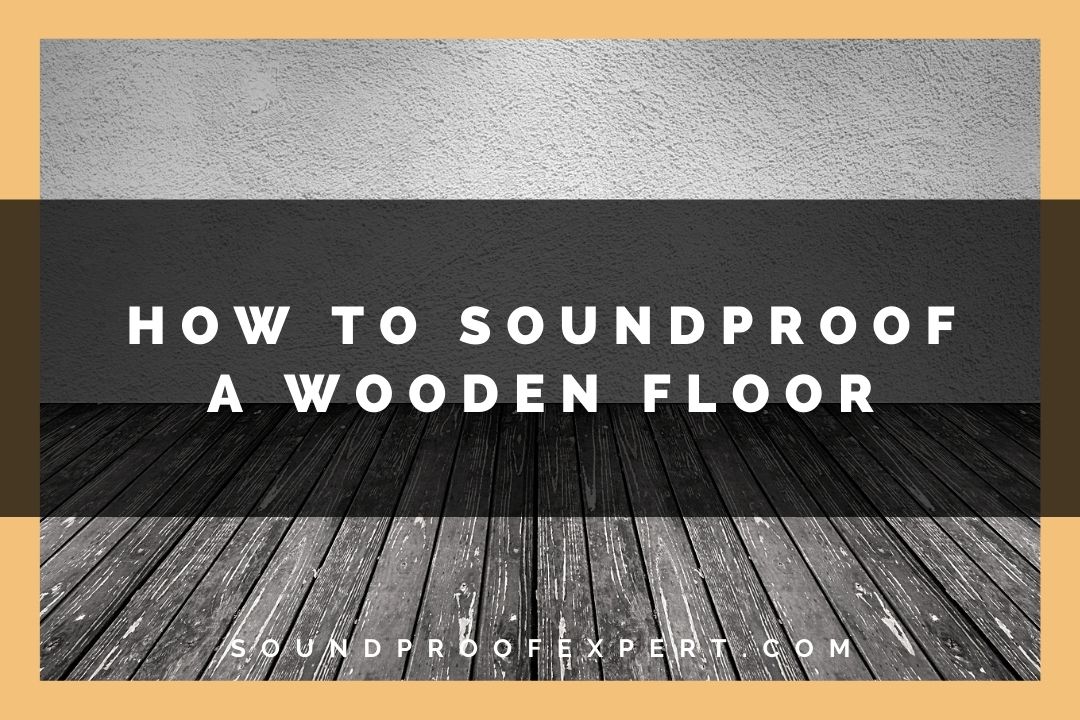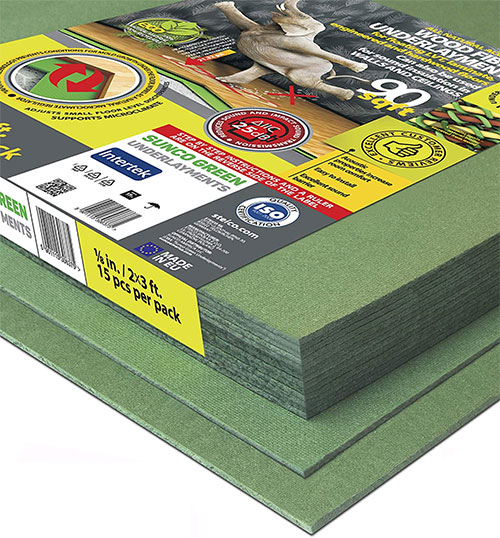On average, most floors are either made out of wood or concrete. While many of these floor constructions are excellently installed, there is the issue of noise and vibrations traveling through the floors into the walls and adjacent rooms, disturbing your peace.
Whether you have noisy upstairs neighbors (maybe you are the noisy upstairs neighbor) or you want to find out how to soundproof a wood floor because it’s what you have in your house, the following tips will help.
The Cheapest Ways to Soundproof a Wood Floor
As you would expect, there are several alternatives when it comes to soundproofing wooden floors. Some are a bit more advanced and aren’t that advisable for people who don’t believe in their DIY (Do-It-Yourself) skills just as some are cheap and easy to implement. We are going to look at both options.
But first, here are the cheap and easier options to consider:
Buy a Carpet or a Rug
It’s logical that a bare, hardwood floor will create more vibrations and impact noises than when carpeted. Buying yourself a carpet or a rug is, therefore, one of the simplest solutions you have to deaden that noise and dampen the vibrations and airborne noise.
You can choose to cover the entire floor or cover those high traffic areas such as hallways and the kids’ playrooms. If you go for this solution, the thicker the carpet or rug, the better it will be at absorbing all that noise.
What you do, however, need to know about this solution is that carpets and rugs tend to wear out, and the thinner they get, the less effective they will be at deadening that noise. So you will periodically have to buy new rugs and new carpets to keep those soundproofing standards up.
Get Acoustic Underlay
If you find that just laying a rug or a carpet on your wooden floor isn’t quite getting the job done, then you might want to consider adding an additional layer of acoustic underlayment before laying your rug or carpet. The underlayment adds an extra layer of insulation and is an excellent way to dampen the noise that could travel through your floor.
Soundproofing a Wooden Floor
Here is the thing about wooden floors; they tend to have cavities that easily let sound and noise vibrations through. This is why your upstairs neighbor sounds heavier than they might be when they walk around their house. A big part of the soundproofing efforts has to go towards filling in these cavities or, at the very least, making it, so they don’t act as weak points for noise transference as much.
To do that effectively, you can install a floating floor or install an acoustic insulation material underneath your floorboards.
Let’s take a quick look at these two options to find out which one would work best for you.
Installing a Sprung Floating Floor
Typically, a floating floor is a floor that tends to sit on absorption pads but isn’t glued or nailed to the joists in any way. This helps to prevent the transference of noise and vibrations through the joists.
There are several ways to install a floating floor but the most common include:
- Using acoustic foam or absorbent pads to cushion your floor
- Using a wooden basket style weave
- Using metal springs (the type of floors used by gymnasts to carry out their routines)
The simplest and most cost-effective to implement these three is using acoustic foam or absorbent pads to cushion your floor.
- Note: The installation of a floating floor might raise the height of your overall floor, depending on the thickness of the foams or pads you use. This means that you may have to adjust your doorways and such.
That being said, here are tips on how to install a floating floor to soundproof a wooden floor:
Necessary Materials
- Your chosen type of foam (make sure it has vibration absorption properties like this Neoprene Sponge Foam)
- Strong and easy to apply adhesive, such as Green Glue.
- A handsaw and a claw hammer
Once you have everything ready, here are the simple steps you need to follow to install the acoustic foam in your wooden floor:
- Use the claw hammer to pull up your wooden floorboards
- Take the exact measurements of your joists (the width) and then cut your acoustic foam pads to fit along the top
- Make sure to cover every joist with these acoustic foam strips to ensure that the floating floor is even
- Use the soundproofing compound glue to stick the acoustic foams to the joists
- Replace the floorboards without nailing or gluing them back. Simply let them sit on the pads that you have glued to the joists
- Replace your skirting board
And that’s it. You now have a much quieter floating floor.
Benefits of Using Acoustic Foam or Pads
Here’s the thing about using this method to soundproof your wooden floors, it works. Even before you are done doing the same to the rest of the house, you should start noticing the difference in the rooms that already have the process completed. This is one of the most common methods of soundproofing wooden floors for several good reasons:
- It’s cheaper than most other methods
- It’s less complicated to accomplish than most
- You can do it in stages (room by room)
- You can easily replace it if you are not happy with the results
If, however, you are still not entirely happy with the kind of soundproofing you get once you have installed your floating floor, you can double up on those efforts by adding an acoustic underlay or going back to the earlier stated options of using a high-quality carpet or rug.
In conjunction with the floating floor, using a good carpet will greatly reduce the amount of noise passing through your floors. Plus, it will provide some insulation, which makes the floor less cold during winter.
These are just the simplest and most effective tips on how to soundproof a wood floor. Thankfully, they are steps you can take on yourself, but if you aren’t entirely confident about your DIY skills, then it’s doesn’t hurt to call a qualified contractor.


